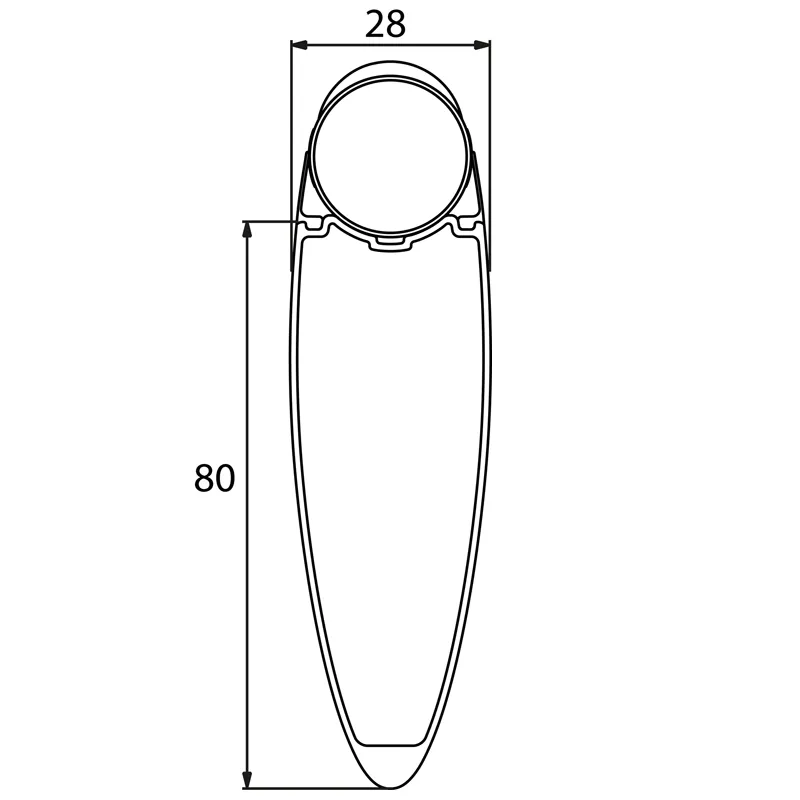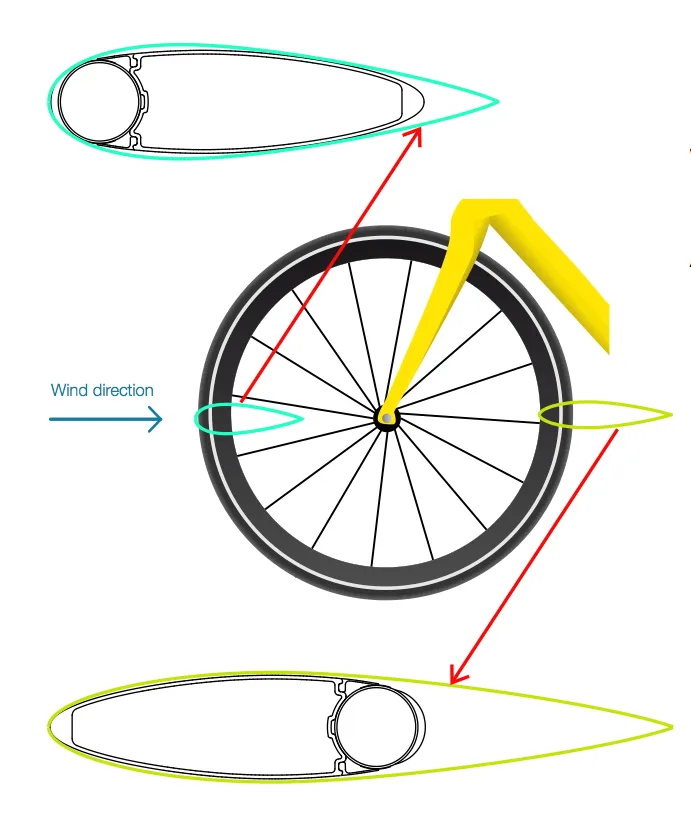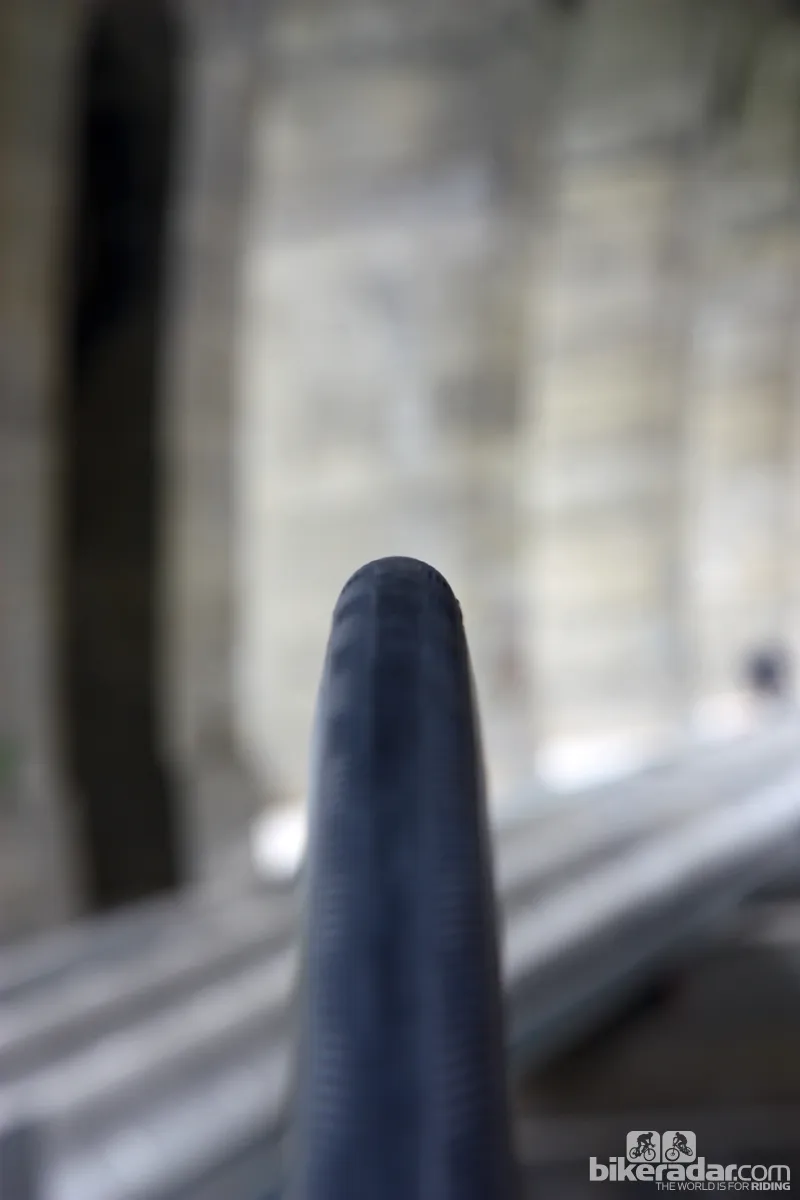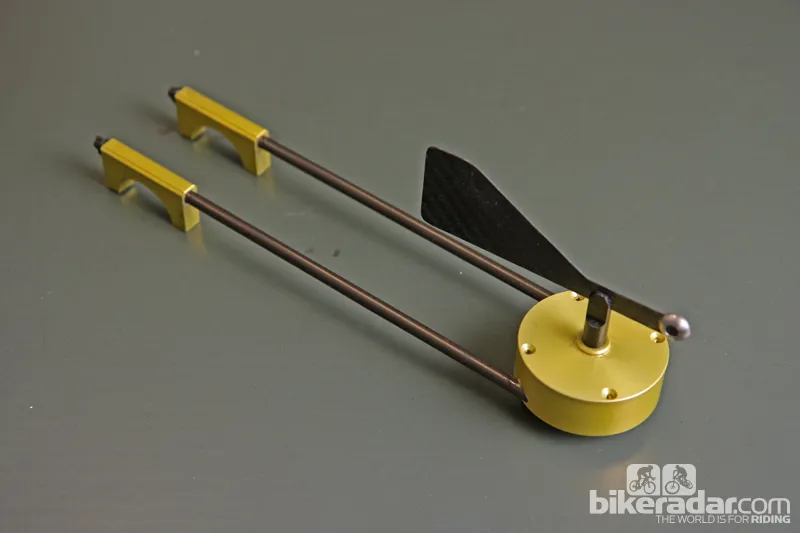Mavic on Sunday launched a wheel the company is calling the “most aerodynamic in the world,” with a uniquely integrated tire system called CX01 (pronounced "see ex one").
The new Cosmic CXR 80 has a novel 80mm-tall rim profile featuring channels for plastic 'blades' that snap into place and dramatically smooth the transition between wheel and tire. Garmin-Barracuda raced the wheels to victory in last year's Tour de France team time trial. Mavic claims this wheelset is so fast that it will unseat the current benchmark of aero speed, the Zipp 808 Firecrest.
Not just a wide profile
It should come as no surprise that Mavic's new Cosmic CXR 80 carbon tubular rim is wide, measuring a generous 27mm across at the tire bed, with a maximum width of 28mm about a third of the way down the profile. However, it's how that profile is integrated with the matching tire that produces the impressive wind tunnel figures.
About 4mm of that width at the tire bed is dedicated to a channel on either side for the new CX01 'blades' – nearly weightless plastic strips that snap into place to produce a smooth transition between the tire sidewall and rim. When combined with the slightly altered casing profile and special tread texture of the matching Yksion CXR tire, the result is a NACA 0024 airfoil profile on the leading side of the wheel and a truncated NACA 0011 airfoil one on the trailing side.
Unable to load media
Video: Mavic's CXR 80 development. Courtesy: Mavic
Mavic's wind-tunnel data suggests modest aerodynamic gains over a Zipp 808 Firecrest at yaw angles up to about 10 degrees. However, Mavic's data also suggests that the 808 begins to stall out at that angle while the drag for the Cosmic CXR 80 continues to drop. When the Cosmic begins to stall at 18 degrees – and where the difference is most dramatic – Mavic claims a 6.4W energy savings at 50km/h (31mph), which translates to 15 seconds saved over a 40km time trial or a more substantial 1' 10" for a full Ironman leg.
Compared to Mavic's Ksyrium, the advantages are even more dramatic: 20 watts, 49 seconds, and more than four minutes for the same conditions.
Attention has to be paid to those novel 'blades’ that smooth the transition between tire and wheel. Garmin-Barracuda used them for a bit last season — until the UCI at least temporarily banned them, pending further investigation. Mavic's tunnel data suggests that the blades' biggest effect is on stall angle, which drops to about 14 degrees when they're removed. Up until that point, however, the blades don’t have a huge influence.

Plastic 'blades' snap into a channel in the rim, dramatically smoothing the transition between wheel and tire
So does this mean the Cosmic CXR 80 is really faster than the Zipp 808? Well, yes and no. Mavic's wind tunnel data reveals only a modest advantage over the Zipp up to 10 degrees of yaw. However, the divergence of the two curves past that point suggests that the new Cosmic is faster over a wider range of conditions, plus the gentler upswing hints to more predictable handling in swirling wind.
Aerodynamic benefits aside, the new Cosmic CXR 80 looks to be a capable wheelset in other key performance areas. Total claimed weight without tires is a respectable 1,630g (725g front; 905g rear; 2,170g with tires and blades) so they're still useful on moderately hilly courses. In addition, the sleek carbon-bodied hubs feature reasonably wide aluminum flange spacing for good overall stiffness, standard straight-pull bladed stainless steel spokes and external nipples are used for easier servicing, and the hubs use a similar internal layout to Mavic's current design.
Of course, the Cosmic CXR 80 will work with other standard road tubulars as well and while Mavic would likely quote some degradation in aerodynamic performance as a result, we expect that it'd be rather modest.
Retail price for the Cosmic CXR 80 is set at €2,490 with US pricing still to be determined. Availability is currently scheduled for mid- to late August worldwide.
Testing, testing, testing
It's commonplace for aerodynamic wheel launches to be accompanied by pages of wind tunnel data (which invariably show the presenter's new model to be the best of the bunch). However, Mavic chose to launch the Cosmic CXR 80 at the wind tunnel in Geneva, Switzerland, where the actual testing was done, and we were able to watch some of the testing.
In fairness, we at BikeRadar don't have sufficient technical knowledge to determine if the Geneva tunnel's protocols genuinely replicate real world benefits or if the programmed algorithms generate truly accurate drag data. However, it's difficult to find fault with the relative inflection points of the Cosmic CXR 80's and the Zipp 808 Firecrest's respective curves that were generated right before our eyes.
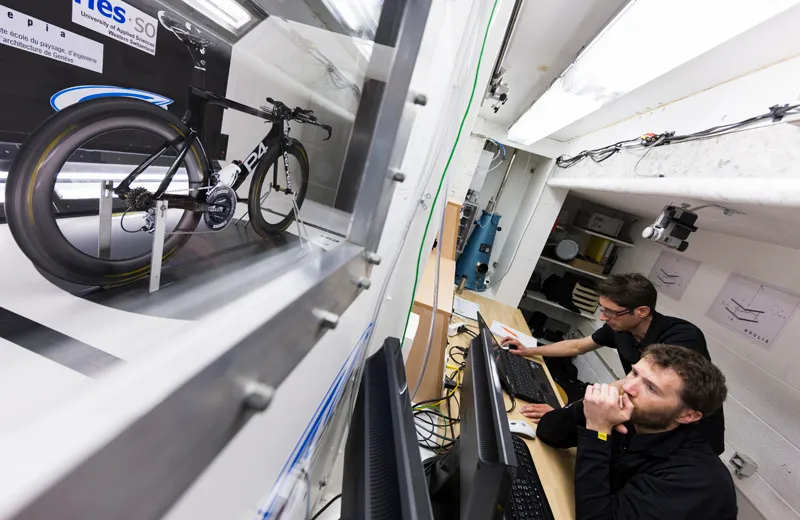
Mavic spent more than 400 hours in the wind tunnel last year
Unable to load media
Video: CXR 80 aerodynamics. Courtesy: Mavic
Mavic's claims at least seem believable and given the length of time that the company has delayed really getting heavily into the aero playing field, one would at least hope the company is doing it properly, particularly given the amount of time invested. According to Mavic, the spent more than 400 hours of wind tunnel time spread out over eight sessions in 2011 alone.
The facility also built a separate "stress balance" specifically dedicated to bicycle use – supposedly the only bike-specific test stage in the world – and claimed resolution is on the order of a single gram of drag. Mavic themselves even built a special widget that measures and records relative yaw angles and wheel rotation speeds in real-time – while riding.
For that kind of investment, the new Cosmic CXR 80 had better be good. We'll find out for sure when test samples arrive later this month.
More to come
Mavic introduced just this single wheel model at the launch and wouldn't confirm plans for future releases. However, the obvious dedication to aerodynamic testing recently – not to mention the glaring omissions in the current line-up – plus the known existence of other pro-only wheels currently undergoing testing such as the Classics-friendly M40 strongly hints that there is more to come. It's difficult to predict the timeline but we expect to see 40mm and 60mm CXR variants in the near future along with some sort of clincher version, too.



